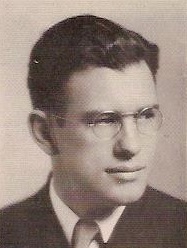
George Frederick McKay
Bio:George Frederick McKay's music emerges from the Far West of North America carrying a vigorous blend of influences, including Civil War Era folksongs sung to him by his grandparents; old Fiddlers' Tunes handed down in the family; Northwest Native American Songs and Dances, and Avant-Garde satire from the Seattle urban scene. His range of musical expression encompasses Symphonies, Chamber Works, Songs, Band Pieces, Woodwind Ensembles, Harp compositions, Organ music, Cantatas, Musical Plays, Modern Dance, and Jazzy Piano pieces. Literally hundreds of these works were published and performed worldwide during his lifetime. Much of his Jazz influenced music was composed in his younger days in Seattle. Later he studied with the Scandinavian composers Selim Palmgren and Christian Sinding at the Eastman School of Music in Rochester, New York, and was influenced toward using folk-music and evocative melodic content in his compositions. In 1923 McKay became the first graduate in Composition at Eastman. One clear memory from McKay's childhood was listening to a hometown bandstand performance by John Philip Sousa's traveling ensemble; forty years later his music was on the concert program at the Smithsonian along with Sousa's, completing a generational cycle. McKay moved on through several distinct decades of musical creativity, including many modern and historical styles in his compositions, and was a leading advocate for the performance of more American music in the concert halls of the nation.
